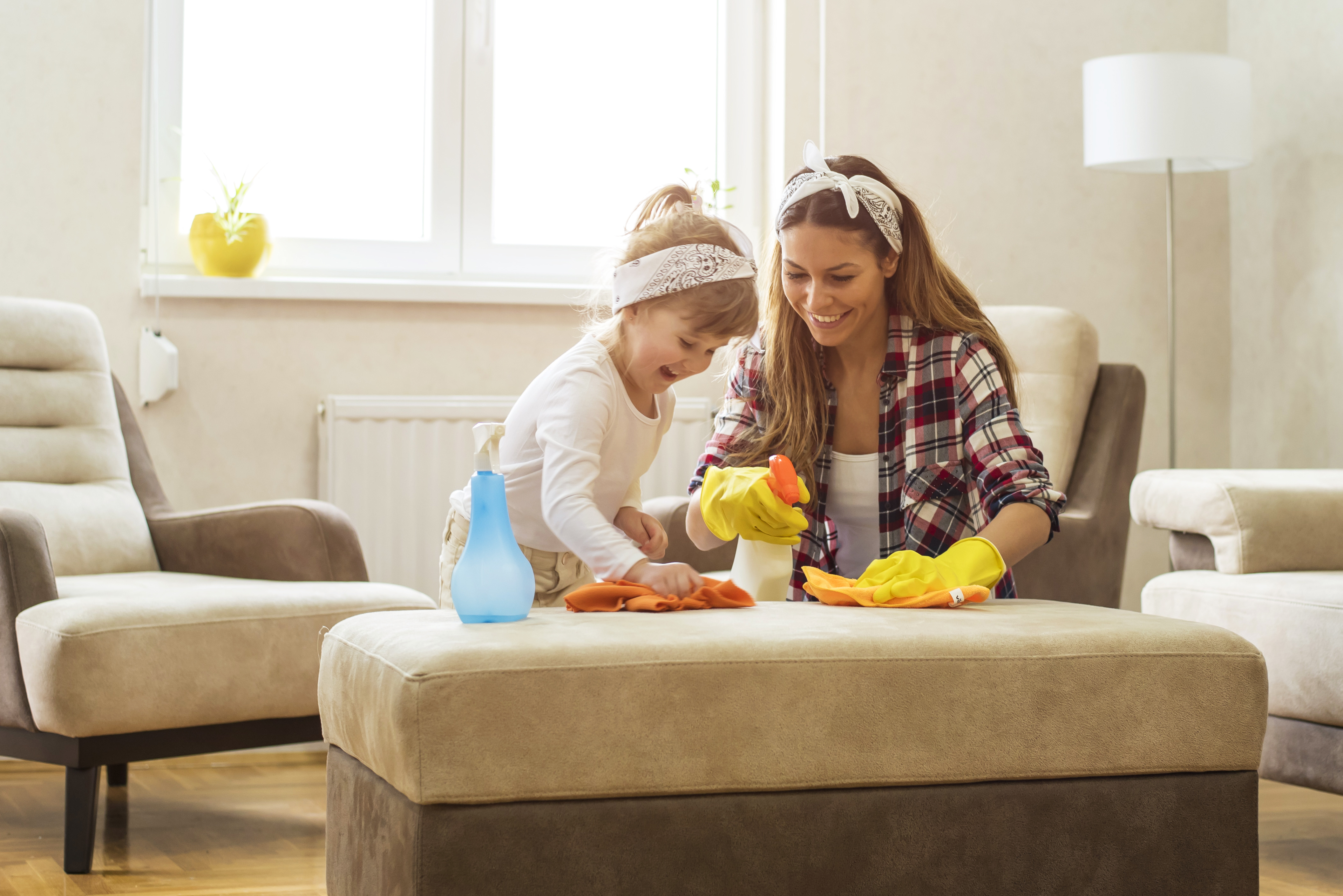Spring Cleaning Empowers Kids
Posted by By Leigh Ann Pernell on Apr 28th 2020

Spring is here—that means that it's time to scrub, scour, wipe, and rinse your way into a fresh clean abode. You need all hands on deck, but if you demand that your kids help, you might be greeted with a resounding chorus of “Noooooo!” You can stop the groaning, have a little fun, and spark some lifelong learning in the process. Here are a few tips that might just change their tune.
ASK for help.
Let your kids know that you need their assistance to get things whipped into shape. It can be empowering for young ones to know that they are respected and needed—that they're an important part of the family team. (They were also a part of the team that made the mess, so they should be a responsible part of the team that cleans it up.)
Model the task.
Show your kids how to complete the job, let them know the expectations, and give them time to rise to the challenge. (Make sure the task matches the child’s abilities.)
Make if fun!
Crank up some music and offer a cleaning challenge or two. Set a timer and see how fast the toys in the playroom can be put in the proper place. Offer an incentive of extra playtime – or create a fun scratch-off reward as a fun cleaning surprise – for when a task has been completed. Motivate your kids with some of the simple things they enjoy the most. (After cleaning the kitchen—bake some cookies!)
Start small.
One task at a time. Have your youngsters organize a bookshelf by putting the books in alphabetical order. Put on a pair of old socks and skate around to clean the floor or scoot on their seats and use their feet to clean the baseboards of the playroom. Put socks on your hands and dust the furniture while singing the ABC's. (Try singing with your tongue stuck out or singing the song backwards—z, y, x, w, v, and u...)
Organize the "stuff."
Sorting and classifying are great ways to build thinking skills. Creating a place (bin, cabinet, drawer, or closet) for everything and then putting each thing in its place will not only make life neater, but it will develop thinking skills as kids sort by common attributes and compare similarities and differences.
Check the dates.
Clean out the kitchen pantry. Show your kids how to find the "used by" date and dispose of outdated boxes and bags. Organize the remaining items by food group or by size of container. This practice will help kids stay organized and healthy.
Clean out and organize closets and drawers.
Encourage kids to part with the items they have outgrown. Sort clothes, accessories, and toys into groups and place them in a box to be donated or sold at a yard sale. After cleaning, you might hold a wacky tacky contest and see who can create the craziest ensemble from the donation box.
Award an official title for each task.
The Crayon Countess can organize the art supplies. The Book Buster can put books in order. The Floor Inspector can sweep and make sure all things are picked up and put away. The Fabulous Folder can fold the laundry as it comes from the dryer. You can make it super official with fun name tags—be creative and inspire your young workers.
Share your appreciation.
Let your children know you appreciate their hard work. We all feel empowered when we have risen to a challenge.
Spring cleaning doesn’t have to be a dreaded chore. These tasks can be transformed into opportunities to work together, build organizational skills, boost thinking, develop problem solving, and even have a little fun. The best part is that the result will be a lot more than just a clean house!

